
Patrick O'Brian, CBE, born Richard Patrick Russ, was an English novelist and translator, best known for his Aubrey–Maturin series of sea novels set in the Royal Navy during the Napoleonic Wars, and centred on the friendship of the English naval captain Jack Aubrey and the Irish–Catalan physician Stephen Maturin. The 20-novel series, the first of which is Master and Commander, is known for its well-researched and highly detailed portrayal of early 19th-century life, as well as its authentic and evocative language. A partially finished 21st novel in the series was published posthumously containing facing pages of handwriting and typescript.

Master and Commander is a 1969 nautical historical novel by the English author Patrick O'Brian, first published in 1969 in the US and 1970 in the UK. The book proved to be the start of the 20-novel Aubrey–Maturin series, set largely in the era of the Napoleonic Wars, on which O'Brian continued working until his death in 2000.
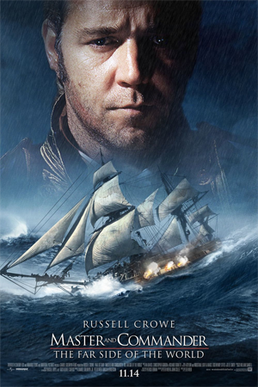
Master and Commander: The Far Side of the World is a 2003 American epic period war-drama film co-written, produced and directed by Peter Weir, set during the Napoleonic Wars. The film's plot and characters are adapted from three novels in author Patrick O'Brian's Aubrey–Maturin series, which includes 20 completed novels of Jack Aubrey's naval career. The film stars Russell Crowe as Aubrey, captain in the Royal Navy, and Paul Bettany as Dr. Stephen Maturin, the ship's surgeon. This is the second onscreen collaboration for Crowe and Bettany, both of whom previously co-starred in 2001’s A Beautiful Mind.
The Aubrey–Maturin series is a sequence of nautical historical novels—20 completed and one unfinished—by English author Patrick O'Brian, set during the Napoleonic Wars and centring on the friendship between Captain Jack Aubrey of the Royal Navy and his ship's surgeon Stephen Maturin, a physician, natural philosopher, and intelligence agent. The first novel, Master and Commander, was published in 1969 and the last finished novel in 1999. The 21st novel of the series, left unfinished at O'Brian's death in 2000, appeared in print in late 2004. The series received considerable international acclaim, and most of the novels reached The New York Times Best Seller list. These novels comprise the heart of the canon of an author often compared to Jane Austen, C. S. Forester and other British authors central to English literature.

The Mauritius Command is the fourth naval historical novel in the Aubrey-Maturin series by Patrick O'Brian, first published in 1977.
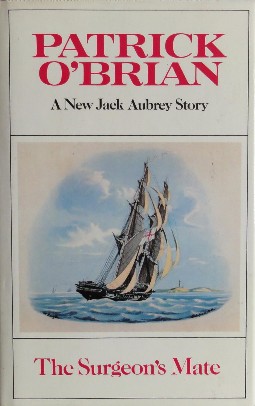
The Surgeon's Mate is the seventh historical novel in the Aubrey–Maturin series written by Patrick O'Brian, first published in 1980. The story is set during the War of 1812 and the Napoleonic Wars.

The Nutmeg of Consolation is the fourteenth historical novel in the Aubrey-Maturin series by British author Patrick O'Brian, first published in 1991. The story is set during the Napoleonic Wars and the War of 1812.

HMS Surprise is the third historical novel in the Aubrey–Maturin series by Patrick O'Brian, first published in 1973. The series follows the partnership of Captain Jack Aubrey and the naval surgeon Stephen Maturin during the wars against Napoleon's France.

Post Captain is the second historical novel in the Aubrey–Maturin series by Patrick O'Brian, first published in 1972. It features the characters of Captain Jack Aubrey and naval surgeon Stephen Maturin, and is set in the early 19th century during the Napoleonic Wars.
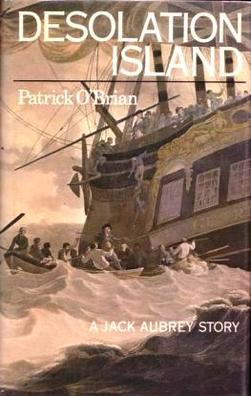
Desolation Island is the fifth historical novel in the Aubrey-Maturin series by Patrick O'Brian. It was first published in 1978.
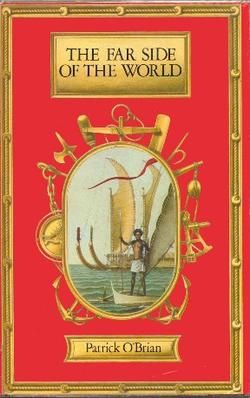
The Far Side of the World is the tenth historical novel in the Aubrey-Maturin series by Patrick O'Brian, first published in 1984. The story is set during the Napoleonic Wars and the War of 1812.

Treason's Harbour is the ninth historical novel in the Aubrey-Maturin series by British author Patrick O'Brian, first published in 1983. The story is set during the Napoleonic Wars.

The Reverse of the Medal is the eleventh historical novel in the Aubrey-Maturin series by Patrick O'Brian, first published in 1986. The story is set during the Napoleonic Wars and the War of 1812.
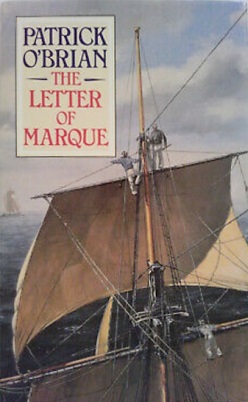
The Letter of Marque is the twelfth historical novel in the Aubrey–Maturin series by Patrick O'Brian, first published in 1988. The story is set during the Napoleonic Wars and the War of 1812.
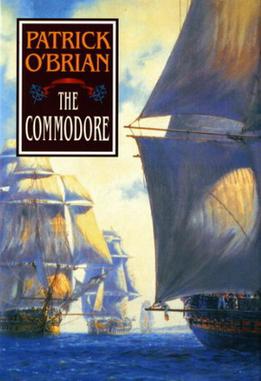
The Commodore is the seventeenth historical novel in the Aubrey-Maturin series by British author Patrick O'Brian, first published in 1995. The story is set during the Napoleonic Wars and the War of 1812.

The Wine-Dark Sea is the sixteenth historical novel in the Aubrey-Maturin series by British author Patrick O'Brian, first published in 1993. The story is set during the Napoleonic Wars and the War of 1812.

The Final Unfinished Voyage of Jack Aubrey is the unfinished twenty-first historical novel in the Aubrey-Maturin series by English author Patrick O'Brian, first published in its incomplete form in 2004. It appeared in the United States of America under the title of 21.
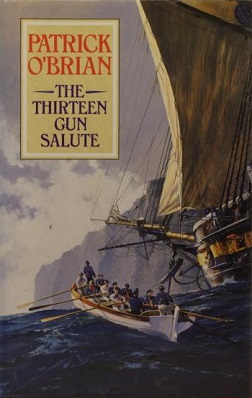
The Thirteen-Gun Salute is the thirteenth historical novel in the Aubrey–Maturin series by Patrick O'Brian, first published in 1989. The story is set during the Napoleonic Wars and the War of 1812.

Dean King is an American author of narrative non-fiction on adventure, historical and maritime subjects. His books include Skeletons on the Zahara (2004) and Unbound (2010), both published by Little, Brown. He is the author of companion books to Patrick O'Brian's Aubrey-Maturin series of novels and is the first biographer of O'Brian. In his biography, Patrick O'Brian: A Life (2000), which was excerpted in four full pages in The Daily Telegraph in London, King revealed that O'Brian was not really of Irish origin, as O'Brian claimed, and that he had changed his name by deed poll in London in 1945. King has also published articles in The New York Times, National Geographic Adventure, New York Magazine, Outside and other magazines and newspapers.

The Road to Samarcand is a novel by English author Patrick O'Brian, published in 1954 and set in Asia during the 1930s. Derrick, an American teen, is brought to China with his missionary parents, then orphaned. He goes to sea with his uncle Captain Sullivan and Ross, the Captain's friend, starting out on the South China Sea. They are the core of a group who has adventures on the road to Samarcand, using skills as required by the challenges of the journey, often for the first time in their lives. They begin on the oldest ways of transportation and end on the newest.




















